Abstract
A hairless mouse-herpes simplex virus skin infection experimental model was used to evaluate the efficacy of the antiviral compounds 9-β-d-arabinofuranosyladenine (ara-A), 5-iodo-2′-deoxyuridine (IUdR), and 6-azauridine (aza-U). Ara-A and IUdR, when administered intraperitoneally by several different dosage schedules, reduced the severity of cutaneous herpetic lesions and the incidence of paralysis and increased significantly the number of survivors. A more rapid healing of the lesions and an increase in the mean survival time also was observed. A delay of 24 to 48 h in the initiation of treatment after the infection was more effective than treatments started at the time of inoculation. Treatment with ara-A was somewhat superior to that with IUdR, but aza-U was totally ineffective. Enhancement of the evolution of the infection was noted after treatment with aza-U.
Full text
PDF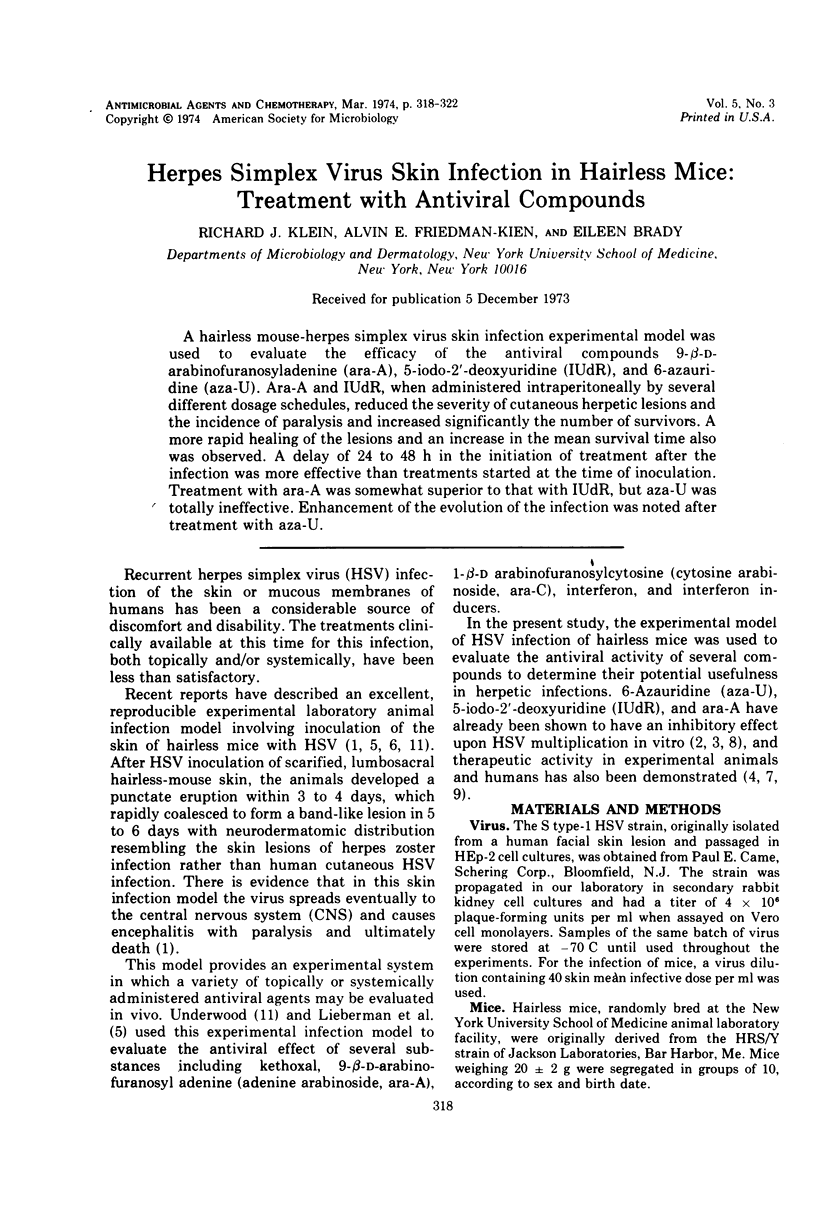
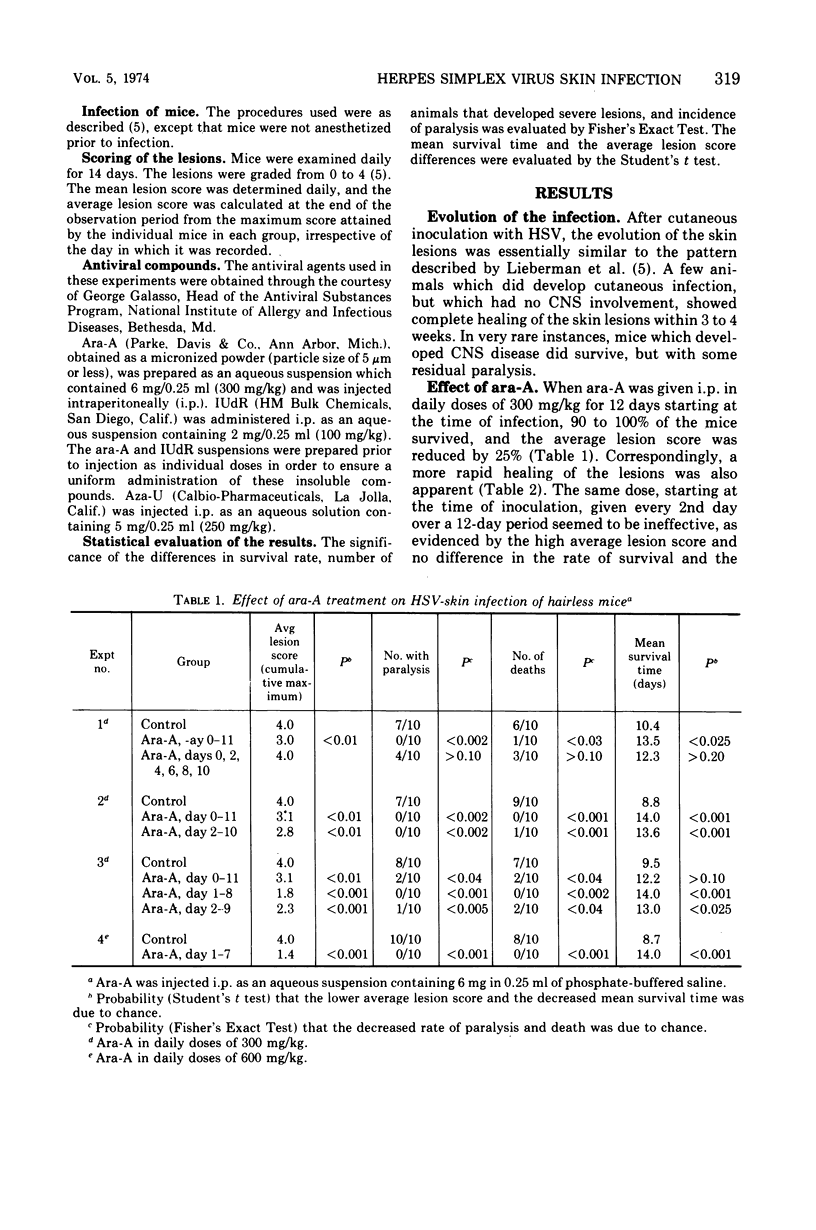
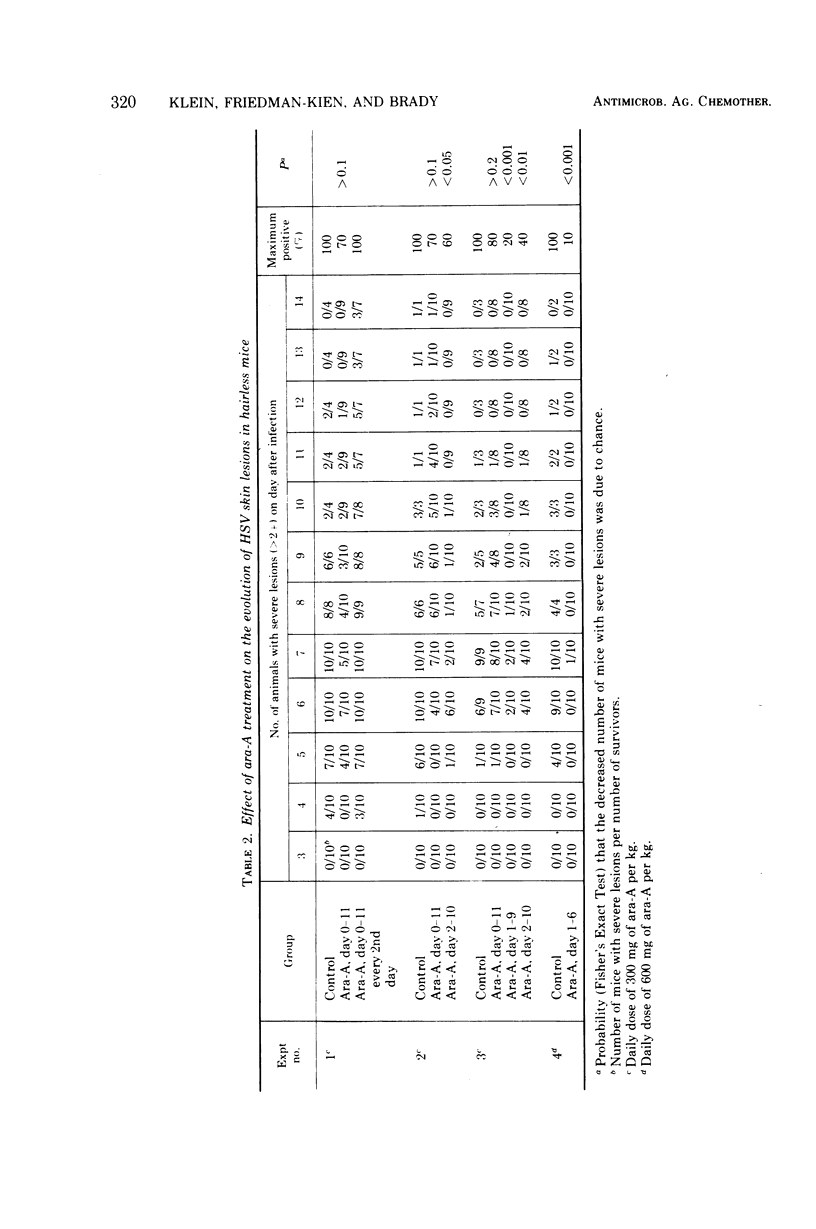
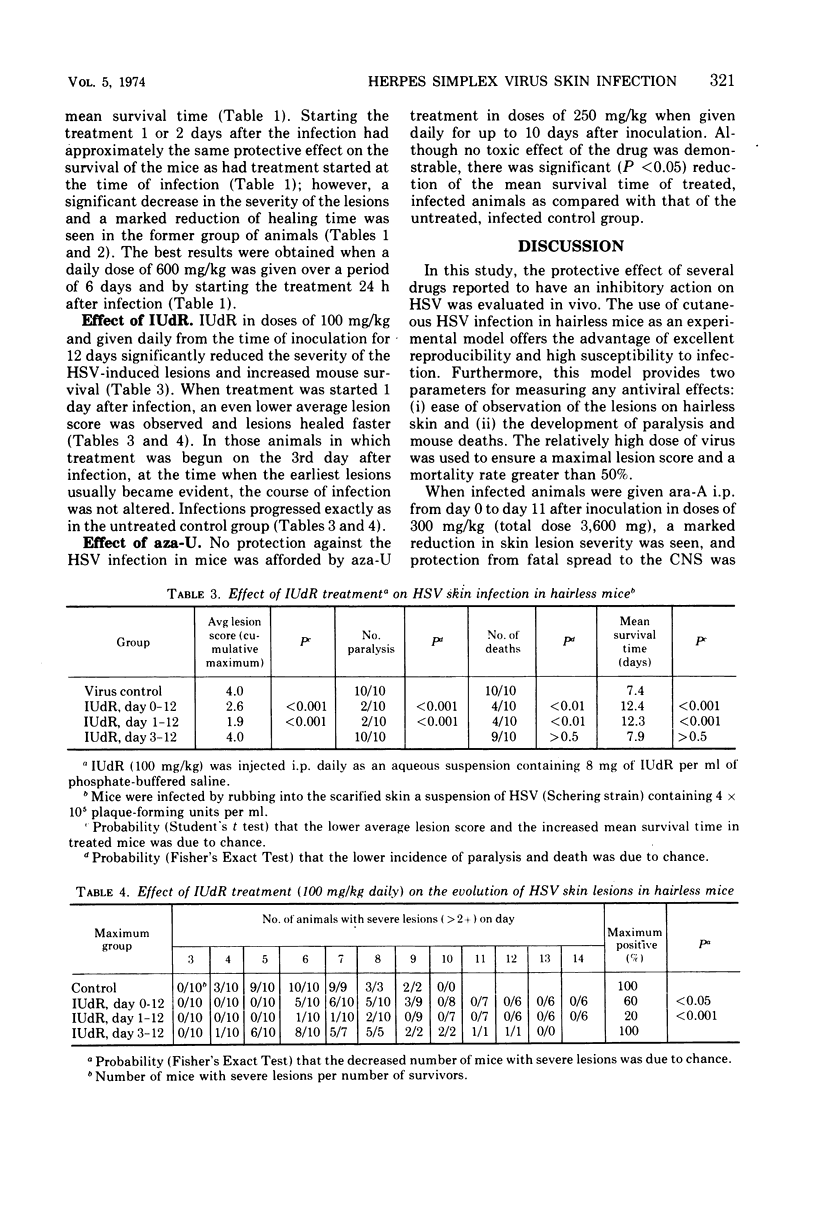
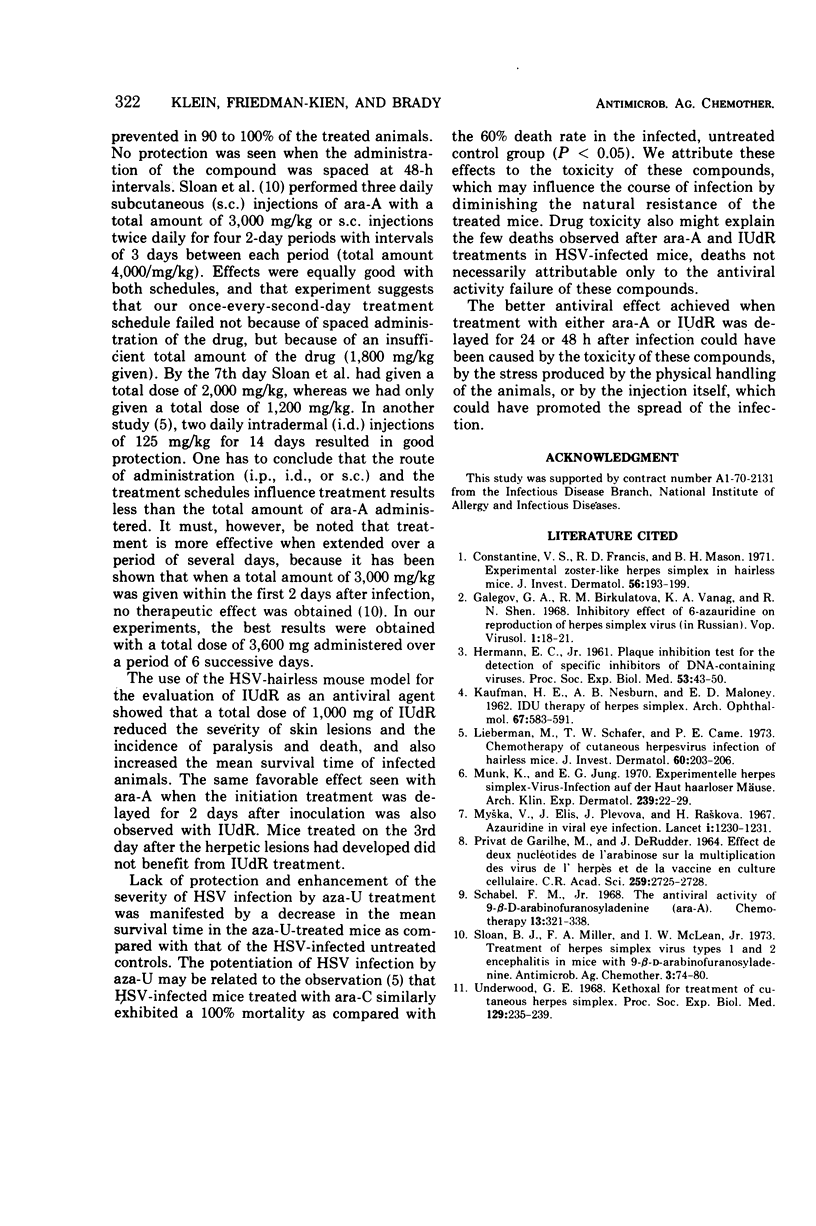
Selected References
These references are in PubMed. This may not be the complete list of references from this article.
- Constantine V. S., Francis R. D., Mason B. H. Experimental zoster-like herpes simplex in hairless mice. J Invest Dermatol. 1971 Mar;56(3):193–199. doi: 10.1111/1523-1747.ep12260802. [DOI] [PubMed] [Google Scholar]
- Galegov G. A., Bikbulatova R. M., Vanag K. A., Shen R. M. Ingibiruiushchee deistvie 6-azauridina na reproduktsiiu virusa obychnogo gerpesa. Vopr Virusol. 1968 Jan-Feb;13(1):18–21. [PubMed] [Google Scholar]
- KAUFMAN H. E., NESBURN A. B., MALONEY E. D. IDU therapy of herpes simplex. Arch Ophthalmol. 1962 May;67:583–591. doi: 10.1001/archopht.1962.00960020583012. [DOI] [PubMed] [Google Scholar]
- Lieberman M., Schafer T. W., Came P. E. Chemotherapy of cutaneous herpesvirus infection of hairless mice. J Invest Dermatol. 1973 Apr;60(4):203–206. doi: 10.1111/1523-1747.ep12724476. [DOI] [PubMed] [Google Scholar]
- Munk K., Jung E. G. Experimentalle Herpes simplex-Virus-Infektion auf der Haut haarloser Mäuse. Arch Klin Exp Dermatol. 1970;239(1):22–29. [PubMed] [Google Scholar]
- Myska V., Elis J., Plevová J., Rasková H. Azauridine in viral eye infections. Lancet. 1967 Jun 3;1(7501):1230–1231. doi: 10.1016/s0140-6736(67)92883-8. [DOI] [PubMed] [Google Scholar]
- Schabel F. M., Jr The antiviral activity of 9-beta-D-arabinofuranosyladenine (ARA-A). Chemotherapy. 1968;13(6):321–338. doi: 10.1159/000220567. [DOI] [PubMed] [Google Scholar]
- Sloan B. J., Miller F. A., McLean I. W., Jr Treatment of herpes simplex virus types 1 and 2 encephalitis in mice with 9-beta-D-arabinofuranosyladenine. Antimicrob Agents Chemother. 1973 Jan;3(1):74–80. doi: 10.1128/aac.3.1.74. [DOI] [PMC free article] [PubMed] [Google Scholar]
- Underwood G. E. Kethoxal for treatment of cutaneous herpes simplex. Proc Soc Exp Biol Med. 1968 Oct;129(1):235–239. doi: 10.3181/00379727-129-33294. [DOI] [PubMed] [Google Scholar]


